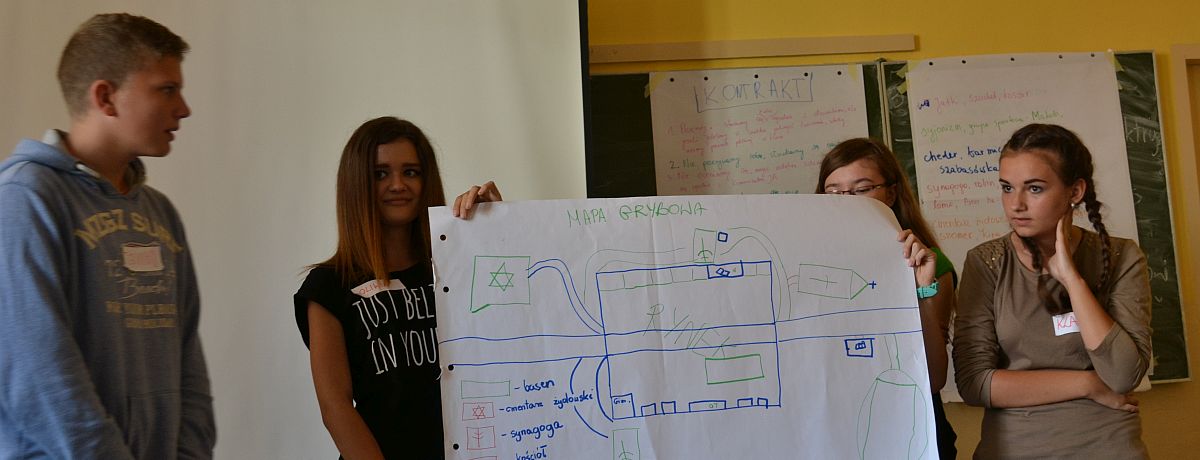| 2016 |
Grybów
Rev. Stanisław Konarski Junior High School


| 2016 |
Workshops led by Forum for Dialogue educators gave Grybów’s junior high students an opportunity to expand their knowledge about Jewish history and culture. The students discovered their town’s Jewish past for themselves.
Grybów is located in Lesser Poland and has the population of over 6,000. It was first established by Polish King Casimir III the Great. Documents related to local Jews date back to mid-18th century, when the municipality and its surrounding area was home to 41 Jewish families. In the second half of the 19th century, the town boasted two synagogues, a cemetery, a cheder and a mikveh. At the time, Jews comprised almost 22% of the local population. In early 20th century, Jewish members sat on the town council. Many were also working for the Jewish community.
Local rabbis belonged to the Hasidic family of Halberstams. Grybów’s Jews were mostly merchants and craftsmen. They would live around the market square, some of them owned a few of the tenement houses. Two cheders existed in the town, while a Talmud Tora school was opened in 1912. On September 7, 1939, German forces entered Grybów. Jews from surrounding area were resettled to the town, with Jewish residents of Łódź and surrounding area and then from local health resorts moving to Grybów in 1940. In late 1941, Germans created a ghetto with a Judenrat. The liquidation of the ghetto took place on August 20, 1942. Some Jews were executed in Biała Niżna, while all others were sent either to Nowy Sącz or to Bełżec gas chambers. In 1943, some 150 Jews brought in from Nowy Sącz were executed at the Jewish cemetery.

In the course of the workshops, students demonstrated great interest in activities connected with the Jewish holidays. They tasted matzo and dates, examined the Hanukiya and tried to guess what a dreidel is used for. They got very involved in building “the tower of multitude”. Students discussed topics related to war and the need for commemoration and were surprised by information related to the diversity of contemporary Jewish life. They had been aware that a synagogue and a Jewish cemetery stand in their town, but it was only during preparation works on their final project that they acquired more detailed information.
The third workshop allowed students to present their walking tour and share the newly-gained knowledge with Forum’s educators. Students presented the most important sites related to Grybów’s history and spent a significant amount of time discussing the role of memory and history. “We’d like our region not to forget about the Jews. We believe that all that had happened should be discussed and we hope that this memory will not be lost. Additionally, understanding how important the synagogue is to Jews, we would like to see its building renewed,” concluded one of the workshop participants.

School:
Rev. Stanisław Konarski Junior High School
Students:
“Wariograf” film club
Teacher:
Aneta Święs
Educators:
Jolanta Goździk, Antonina Stasiuk
In appreciation to the Conference on Jewish Material Claims Against Germany (Claims Conference) for supporting this educational program. Through recovering the assets of the victims of the Holocaust, the Claims Conference enables organizations around the world to provide education about the Shoah and to preserve the memory of those who perished.

In appreciation to Friends of the Forum for supporting the School of Dialogue educational program.
